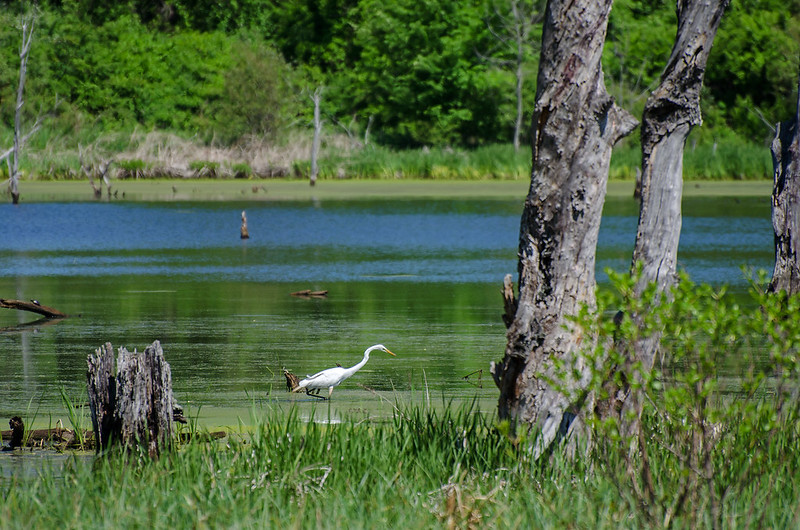
Kintzele Ditch flows into Lake Michigan from the waters of the Great Marsh, a 10 mile long wetland just behind the large sand dunes along the shore. The two dunes it divides appear drastically different from one another - one is rather bare, while the other is lush with trees and vegetation. Lake Michigan is slowly wearing away the beach, and collapsing the dunes little by little. With each collapse, grass and full grown trees fall onto the beach, and are washed away by the waves of the lake.
The dune at the left has seen some major erosion over the past few years (not to say it was completely covered with trees previously), most of the front of the dune is gone. This erosion is evident on the lakeside surface of the dune at the right. Once covered in shrubs and trees, many have fallen victim to waves and gravity.
This panoramic image is composed of eight photographs stitched together. The effect gives an interesting vantage point to the stream and dunes.






















